Demand Response Delivers Savings on Demand
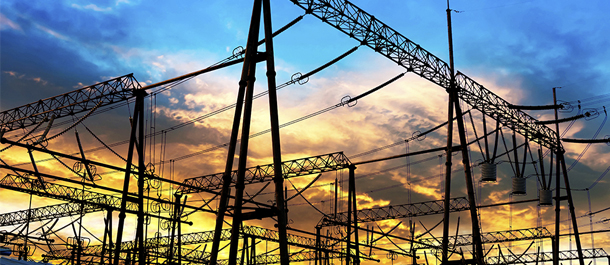
Energy is a hot commodity during peak usage hours. Busy daytime hours, such as weekday working hours, are more likely to draw heavily on the power grid than down times—say, two in the morning on a Tuesday. By minimizing lighting and energy use during these heavy draw times, businesses can secure significant savings. This technique is known as demand response.
Demand response is an energy conservation strategy that involves reducing lighting loads during peak energy usage times. These high-demand times of day are communicated by the utility company to a facility through the use of building automation systems (BAS) or building management systems (BMS). When a system is notified that it’s entering a peak usage time, the system automatically reduces electrical loads by a preprogrammed amount.
With a lighting control system that integrates to BAS/BMS systems to receive and respond to demand response signals, buildings can see dramatic reductions in energy costs. In some cases, it's also mandatory to meeting code compliance requirements.
California Title 24 2013 Demand Response Requirements
California Title 24 2013 has quickly become a trademark example of intelligent and effective code compliance that is inspiring other states and municipalities to follow suit. Title 24 shares many of the benchmarks set by national standards such as ASHRAE Standard 90.1 2010, but it exceeds these requirements in several areas.
One notable example is the Demand Response requirement, which mandates automatic demand response capabilities for lighting systems in all commercial buildings larger than 10,000 square feet, regardless of space type. While demand response is currently primarily required in California, its effectiveness at lowering energy usage is expected to lead to wider adoption in the near future.
Leviton Demand Response Solutions
Whether meeting demand response requirements for a small standalone commercial space or an entire campus of buildings, Leviton has a smart lighting control solution.
Integrated Room Control (IRC) Demand Response Solution
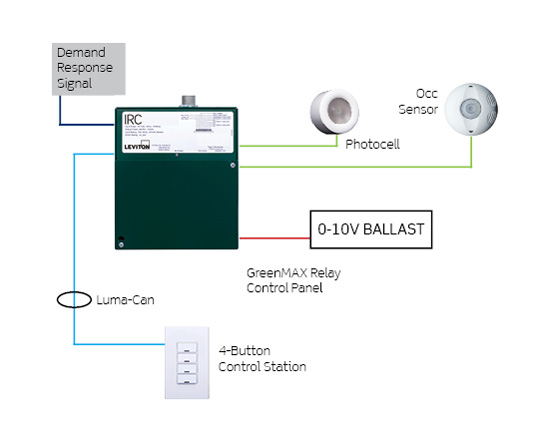
Combines energy-saving capabilities in a single standalone package:
- Demand response
- Occupancy sensing
- Daylight harvesting
- 1-10V dimming
- Partial-ON
- Partial-OFF
Kitted with factory-configured sensor, photocell and 4-button switch
AutoCal™ automatic photocell calibration and Ladderless Commissioning™ features deliver install-and-forget convenience
Learn more at Leviton.com/irc
GreenMAX™ Demand Response Solution
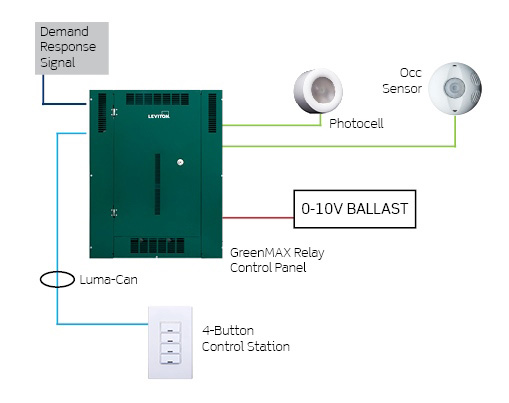
Combines energy-saving capabilities in a powerful centralized control system:
- Demand response
- Occupancy sensing
- Daylight harvesting
- 1-10V dimming
- Partial-ON
- Partial-OFF
- Automatic shutoff
- Space control
- Parking garage control
- External lighting control
Pre-programmed “Behaviors” allow facilities to plan schedules according to time-of-day, business hours, changing seasons and other factors
Learn more at Leviton.com/greenmax
Sector™ Demand Response Solution
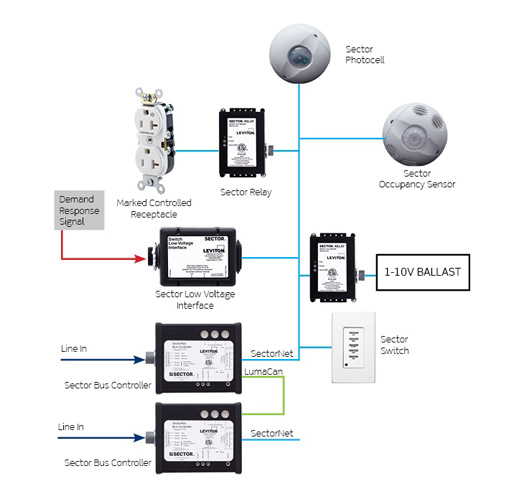
Combines energy-saving capabilities in an extremely flexible distributed control package:
- Demand response
- Occupancy sensing
- Daylight harvesting
- 1-10V dimming
- Partial-ON
- Partial-OFF
- Automatic shutoff
- Space control
Expandable, flexible, topology-free and polarity-free from one room to a campus of buildings
Learn more at Leviton.com/sector
Dimensions® D4000 Architectural Demand Response Solution
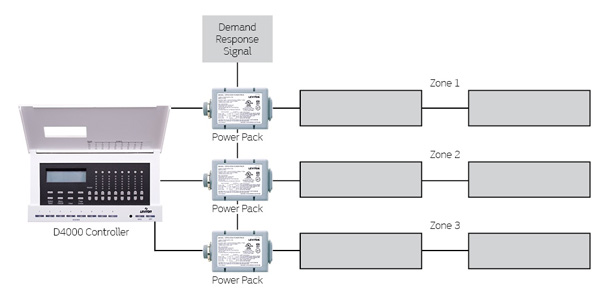
Combines energy-saving capabilities in an architectural scene control package:
- Demand response
- Occupancy sensing
- Daylight harvesting
- 1-10V dimming
- Partial-ON
- Partial-OFF
- Scene control
Powerful and flexible lighting control with a wide range of entry stations controlled by an easy-to-operate station
Learn more at Leviton.com/architectural


